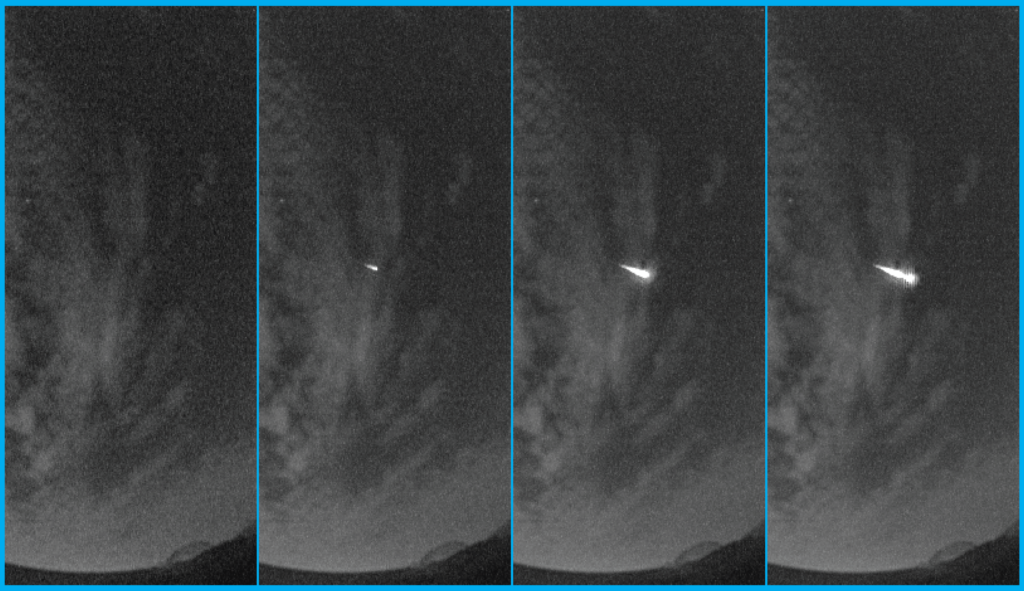April 21, 2015 9:19 pm
Will this week’s 2015 Lyrid Meteor Shower be a boom or a bust?

Credit: Lyrid Sequence from 4/22/14, courtesy of NASA.gov.
This year, the Lyrids peak early Wednesday, 4/22 and Thursday, 4/23.
Will they be a boom or a bust?
The fact that the moon is an early setting waxing crescent should bode well, and if you’ve got clear skies, that’s even better.
However, while you could start seeing Lyrids as early as 10 PM, the best time for fireballs is a few hours before dawn.
So is it worth your time to get out there and looking up between the constellations Lyra and Hercules? (You can also watch NASA’s live feed from the Marshall Space Flight Center beginning at 10:00 PM CDT on April 22.)
Here’s what Sky & Telescope says: “To be honest, you’re likely to see no more than a few meteors per hour. At its best, this shower’s typical zenithal hourly rate (the number you could count under a very dark sky with Lyra near the zenith) is about 15 or 20. That’s enough to be clearly a shower if you’re watching and counting for an hour or more. But it’s a far cry from the 90 to 120 per hour expected on the moonless late nights coming up for this August’s Perseids and December’s Geminids.” You can read Sky & Telescope’s full Lyrid coverage here.
On the other hand, EarthSky is more optimistic: “Awesome Lyrid prospects this year! You might see 10 to 20 meteors per hour at the peak on the mornings of April 22 and 23, with the nod going to April 23.” Check out EarthSky’s full Lyrid coverage here.
Universe Today falls somewhere in between: http://www.universetoday.com/119842/the-2015-lyrid-meteors-peak-tomorrow-night/
“And the good news is, 2015 should be a favorable year for the first major meteor shower of the Spring season for the northern hemisphere. The peak for the shower in 2015 is predicted to arrive just after midnight Universal Time on Thursday April 23rd, which is 8:00 PM EDT on the evening of Wednesday April 22nd. This favors European longitudes right around the key time, though North America could be in for a decent show as well.” You can find Universe Today’s Lyrid viewing guide here.
So all three sources basically agree on the maximum Zenithal Hourly Rate of 15-20 meteors, with EarthSky dropping that to 10-20 meteors, but whether that will amount to an awesome shower or a disappointing event is clearly in the eye of the beholder.
What do you predict? Even better, tell us what you ended up seeing in the comments.
That’s it for now. Keep Looking Up!
–Jeffrey Simons
Get the most out of StarTalk!
Ad-Free Audio Downloads
Priority Cosmic Queries
Patreon Exclusive AMAs
Signed Books from Neil
Live Streams with Neil
Learn the Meaning of Life
...and much more

 Become a Patron
Become a Patron

